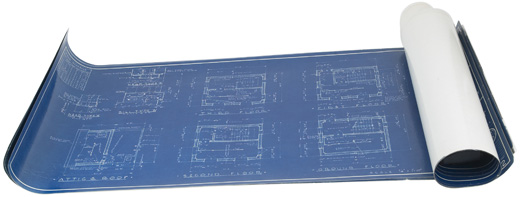It is not uncommon for clients to request ownership of your plans and specifications. Corporate clients often assume they will somehow be of future value. Educational clients think they can create a database of project information that will help them reduce future costs. Agencies of government reason that the public, having paid for your services, has a right to “own” the result. In these situations the clients are confusing the services provided with the deliverables – what often are characterized as “instruments of professional service.”

The issues of copyright, design, and deliverables, of the status of the plans and specifications as recommendations and not products, and of the interaction of state licensing laws with the transfer of intellectual property all seem to be ignored by clients who insist on ownership. At times the contractual language transferring ownership extends beyond final documents to every related calculation, design study or preliminary effort.
Design firms do not sell plans. They sell services; the plans are communication tools to convey the final design recommendations. The risks of treating the instruments of service as products can be significant. First, and perhaps the greatest risk, is that any automatic transfer of instruments of service removes the leverage a firm has to enforce payment of its fees. Consider the possibility that your client might choose to terminate your services during the course of a project. If the client can demand that you turn over your partially completed documentation, you could have no recourse but to comply and therefore have no negotiating power to protect your interest in seeing the project through to a successful completion.
Other, but less substantial, risks also exist. If you transfer the instruments of service either in hard copy or digital form, at some unknown point in the future the documents could be reused without your knowledge. If your firm is still identified with the documents, a claim having little or no merit but significant cost could be brought against you.
As the growth of alternative delivery methods continue, the transfer of instruments of service might be construed by a court to be products, subject to strict liability or product liability standards with implied warranties of merchantability and fitness for use. It is, of course, possible to agree to transfer copies of, or even the copyright to, final plans and specifications. If you take great care in negotiating the transfer provisions up front, you can avoid the lost leverage, the possible open-ended liability, and the mistreatment of instruments of service as products.
First your contract should not be silent on the issue. The AIA and EJCDC standard forms created law by calling the documents instruments of service and by reserving all rights to them in the professional. If you use standard language, you are protected but if the contract is silent, a court may construe the intent to have been a transfer of ownership and use to your client.
Any transfer should identify the documents as instruments of service and make clear that the final documents are intended for use only in connection with the specific project. You also can remove any reference to your firm to reduce the possibility of being dragging into a future meritless claim.
Both you and your client should understand that there is a difference between ownership of documents and the copyright to those documents. And with “architectural works” there is a separately recognized intellectual property right in the design. Any transfer, to be clear, must address all of the issues.
The alternative, of course, is the licensing of the use of the intellectual property as is suggested in the standard AIA and EJCDC contract forms. This licensing can be structure to both protect the economic and legal interests of the design firm while giving the project client rights that would cover the client’s perceived needs.
Recognize that it makes no sense at all for a firm to agree to transfer ownership in the documents at any point other than completion of construction. As long as you retain control, you will be in a position to help your client while protecting your cash flow. If a project is suspended or your services are properly terminated while you are in control of the instruments of service, you always can negotiate a transfer of completed or in-progress documents as long as the client is waiving rights against you and protecting you from future third-party litigation. While the transfer of the ownership or copyright to your instruments of service is a business issue, always be aware that there could be professional liability exposure implications caused by the future use of your documents.
Learn more about the AIA Trust’s professional liability insurance and business owners insurance.
Victor and CNA work with the AIA Trust to offer AIA members quality risk management coverage through the AIA Trust professional liability insurance program, cyber liability insurance, and business owners program to address the challenges that architects face today and in the future.